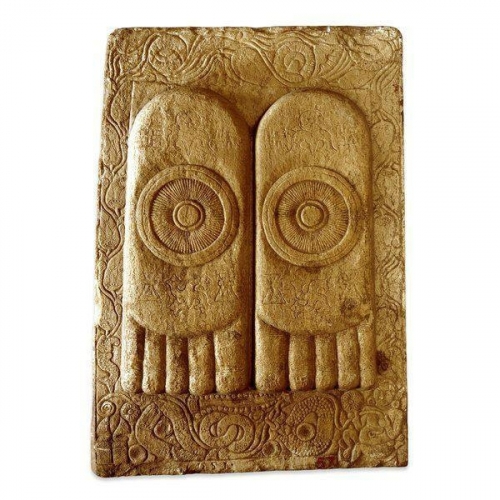The Buddhapada
Limestone panel depicting the footprints of the Buddha
From the Great Stupa at Amaravati, Guntur District, Andhra Pradesh, India, 1st century BC In the early period of Buddhist sculpture in India, the Buddha was not represented as a human figure. Instead he was indicated through aniconic symbols. This relief from the Great Stupa at Amraravati, showing the Buddhapada, or Buddha's footprints, serves such a purpose.
Feet represent the grounding of the transcendent, and have long been the focus of respect in India. The 'lotus feet' of gods and gurus are revered there even today, and worshippers are always expected to have bare feet in temples, shrines and even private houses. Divine status has always been indicated by auspicious signs, or special symbols, in Buddhist sculpture. Here, at the centre of each foot is a finely spoked dharmachakra (Wheel of the Law set in motion when the Buddha gave his First Sermon).
Other faint incision marks on the feet reveal more auspicious symbols. On the heels are triratnas flanked by simple square angled svastikas. The triratna represents the three Jewels of Buddhism: the Buddha himself, his dharma ('teachings') and the sangha, the community of Buddhist monks. In the area just above the toes are large curling svastikas between two hourglass shaped emblems. An elaborate border of lotus buds and flowers surround the footprints, their undulating stems emerging from the left side of the panel from the mouth of a small makara (mythological aquatic creature).
On the bottom-right of the frieze sits a fat dwarf-like yaksha whose umbilical cord forms a divine wish-fulfilling vine that bears jewels as fruit.
D. Barrett, Sculptures from Amaravati in t (London, Trustees of the British Museum, 1954) - R. Knox, Amravati : Buddhist sculpture
London, The British Museum Press, 1992
